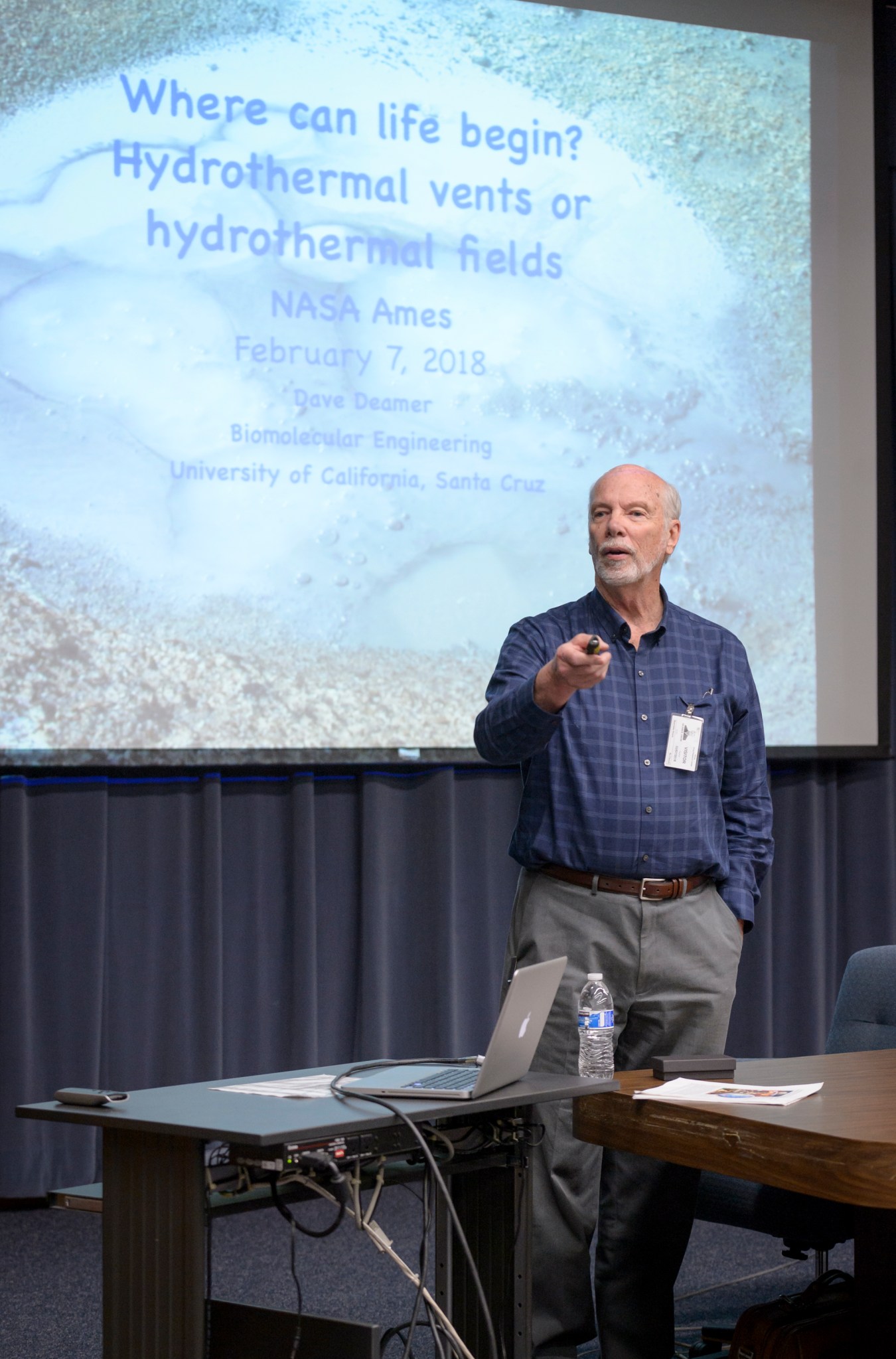Dr. David Deamer: Hydrothermal vents or hydrothermal fields: Where can life begin?
Abstract:
Because salty seawater dominates the Earth’s surface today, it is natural to think that life began in the ocean, perhaps in hydrothermal vents. However, from a biophysical perspective there are significant limitations to this conjecture. An alternative site is hydrothermal fresh water. Volcanic regions of Kamchatka, Iceland and Hawaii have abundant fresh water pools that undergo cycles of hydration (precipitation) and dehydration (evaporation). A laboratory simulation of such cycles used solutions of mononucleotides mixed with lipids that can assemble into membranous structures. When the mixtures were exposed to multiple wet-dry cycles, RNA-like polymers from 10 to over 100 nucleotides in length were products. Furthermore, in the final hydration phase the polymers became encapsulated in lipid vesicles to produce protocells. Selection and evolution of robust protocells composed of encapsulated catalysts could be the first step toward the origin of life in a fresh water environment. These results have obvious implications related to the search for life on Mars and icy moons like Enceladus and Europa.
Biography:
David Deamer is a Research Professor of Biomolecular Engineering at the University of California, Santa Cruz. Deamer received his undergraduate degree in Chemistry from Duke University in 1961, and PhD in Physiological Chemistry at the Ohio State University School of Medicine, 1965. Deamer’s research has focused on biological and synthetic membranes, particularly how primitive lipid-like compounds could have encapsulated polymer systems to give rise to the first living cells. In 1989, Deamer proposed the idea that it may be possible to sequence a DNA molecule by passing it through a nanoscopic pore embedded in a lipid bilayer membrane. Collaborative research with Daniel Branton (Harvard University) provided proof of principle, and in 2012 Mark Akeson’ group (UC Santa Cruz) showed that a nanopore could resolve base sequences in synthetic DNA. In 2014, Oxford Nanopore Technology marketed the MinION device which utilized nanopore sequencing concepts. Researchers at NASA Ames are developing a nanopore-based biosensor for future life detection missions on Mars, Europa and Enceladus.



































